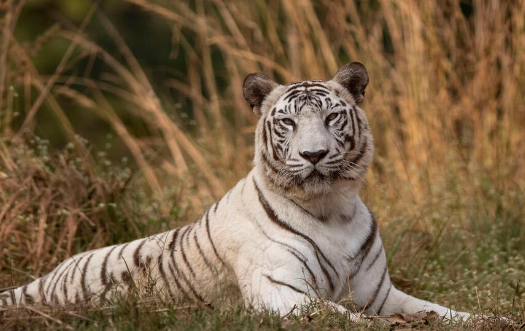Title: The Enigmatic Beauty of White Tigers in Nature
White tigers have captivated hearts and sparked curiosity for generations. Their striking appearance and rarity make them a subject of fascination in wildlife conservation and popular culture. Understanding their natural habitat and behavior is essential for appreciating these magnificent creatures and advocating for their preservation.
The Genetics Behind Their Coloration
White tigers are not a separate species; they are a genetic variation of the Bengal tiger. This beautiful coloration occurs due to a recessive gene that limits the production of pheomelanin, the pigment responsible for the orange hue of most tigers. The white coat, combined with their unique blue eyes, creates an enchanting look that sets them apart. However, this genetic anomaly is rare, with only a few hundred white tigers existing in the wild and captivity. Learning about this genetic background enhances our understanding of their plight and the importance of genetic diversity in conservation.
Habitat and Behavior in the Wild
In their natural habitat, white tigers thrive in the dense forests and grasslands of the Indian subcontinent. They are skilled hunters, primarily preying on large animals such as deer and wild boar. These solitary creatures use their keen senses to stalk and ambush their prey, making them adept predators. While their striking color may hinder their camouflage in some environments, white tigers have adapted to their surroundings by being stealthy and patient. Moreover, ensuring the preservation of their habitats is crucial for their survival, as habitat loss due to human activities poses a significant threat to their existence.
Conservation Efforts and Challenges
White tigers face numerous challenges, especially from poaching and habitat destruction. Conservation organizations are working tirelessly to protect these majestic animals in the wild and ensure their genetic diversity through controlled breeding programs. Helping to raise awareness about the importance of wildlife conservation and supporting initiatives can make a difference in the survival of white tigers. While their charm continues to enchant people worldwide, it is vital to remember that their existence relies on our commitment to protecting their natural habitats and addressing the threats they face.
Conclusion
White tigers are more than just beautiful animals; they embody the complexities of nature and conservation. By understanding their genetics, habitat, and the efforts in place to protect them, we can become better advocates for wildlife preservation. If you’re intrigued by these fascinating creatures, consider exploring more about wildlife conservation and the role we play in safeguarding their future. Together, we can help ensure that white tigers remain a symbol of nature’s wonder for generations to come.

